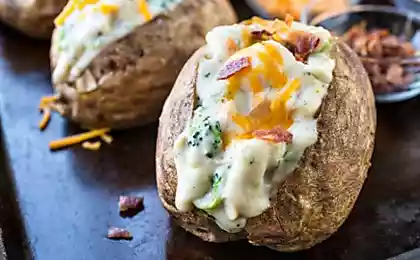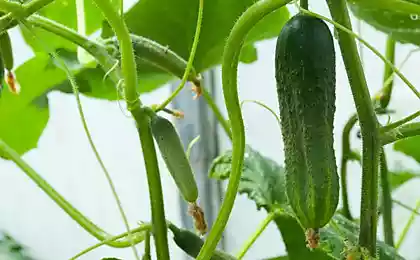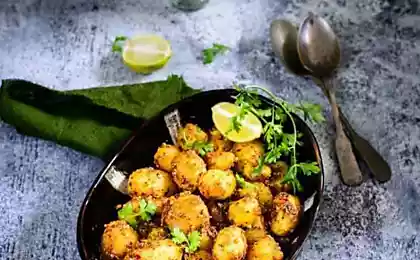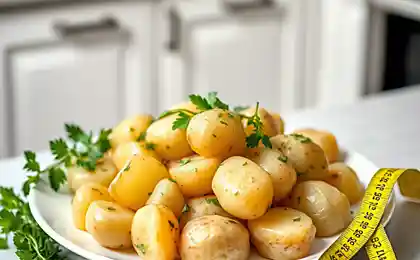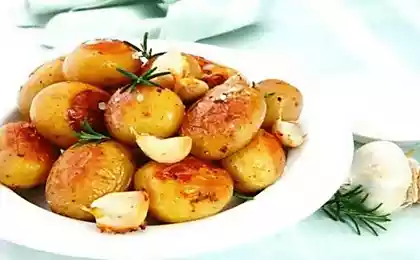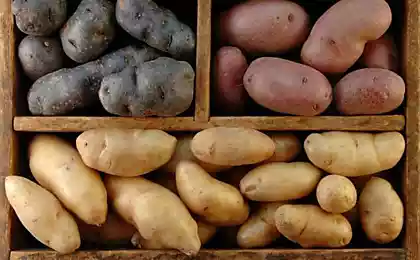469
How to grow sweet potatoes in the garden
Yams, or sweet potatoes, grown for starchy tubers. The benefit of yams is that it can grow there, where an ordinary potato because of degeneration or a mass of infection can not grow. Sweet potato is a perennial plant, but in culture it is used as an annual. Plant demanding to heat (normally grows at a temperature of 20-30°C), moisture, and light frost does not tolerate. For abundant flowering need a shortened day. Where the climate is not very warm, it is grown under the film shelters.

The stems of sweet potato trail, easily rooting at the nodes. The length of the stems 1.5—2 m, length of internodes 8-15 cm Leaves are alternate, without stipules, but on long stalks. The shape and size of leaf blades from different varieties are not the same: occur in the form of a heart, and even copiaza blade. In the axils of the leaves develop flowers that make up the brush from 3-7 buds. Pedicels same length as petioles. Flower batata is similar to a funnel, as in the bindweed.
The plant is cross — pollinated, pollinated mainly by bees. Self-pollination occurs very rarely and only in some varieties of sweet potato. Basically sweet potatoes are propagated vegetatively by sprouts, but for breeding purposes resorted to seed reproduction.
Most varieties of sweet potato almost completely lost the ability to sexual reproduction, many varieties are not blooming, but some bloom and even form seeds.
The tubers of Yam is nothing like thickening of the roots, therefore it is more correct to call them roots. They don't have buds, and sprouts develop from latent buds, available in large quantities on the surface of the underground vegetative organ. Depending on the variety, the tubers form are spherical, often elongated, spindle — shaped, color — white, pink, cream, pale yellow, orange.
The chemical composition of tubers of sweet potato is largely determined by varietal characteristics and cultivation conditions. The amount of dry matter in tubers of different varieties ranges from 30 to 40 %. Its main part is made by starch and sugar (primarily glucose). Due to the different sugar content of tubers of sweet potato have different taste, are very sweet and very savoury. The chemical composition of the potato close the potato, but the carbs are much superior to his.
The caloric content of tubers during cooking is increased. In the food consumed in roasted, boiled, baked and dried. Batalova flour sweet enough. If it is mixed with wheat flour, such mixture it is possible to bake cookies, cakes, bagels, muffins... added sugar is not required.
The starch of the plant are used for medical purposes. Also sweet potato is used as enveloping and emollient agent in the treatment of diseases of the gastrointestinal tract. You can make the sweet potato also as a tonic and vitamin remedy. It is considered that the fruits sweet potatoes contain the natural female hormone — progesterone. Levels of progesterone makes the sweet potato and means of it a very valuable product for women who have reached menopause.
Those who suffer from indigestion also recommended the sweet potato because it contains delicate plant fiber. In particular, to use sweet potatoes is to those who endure cellulose beet, carrots, and other usual vegetables, may not. Sweet potatoes better than potatoes on the content of calcium and carbohydrates in fruits. The taste of sweet potato, depending on the variety, reminiscent of fried or boiled frozen potatoes.
How to grow sweet potatoes? First of all, you need to buy a few tubers for a small area they will need only a few pieces. The sprouting sweet potato lay in January and February, it is possible to adjust the drawer height of 15-20 cm. place it on a tray and kept on the windowsill. In the bottom of the box drill a hole to drain excess moisture. The composition of the soil: 1 part of loose soil, then in equal amounts of coarse sand and humus. Mixture after mixing fill half the volume of the box, the top should be a layer of granular sand (3-5 cm).
Before planting on the germination of the tubers are good to disinfect with a weak solution of copper sulphate, then put in a box on the surface of the sand and slightly pressed into the soil, then sprinkle coarse sand layer 3-4 cm. the Temperature for germination should be between 18-27°. To maintain the moisture of the soil regularly watered.
In a month will appear the first sprouts. Upon reaching 4-6 internodes shoots are separated from the tuber and deposited either in a warm greenhouse or in a pot of soil. Sprouts from tuber shoot 5-7 times at intervals of 8-10 days.
Seedlings of sweet potatoes in the open ground planted when the soil is warm. In the southern areas of the country, the planting of yams begins in late April and ends in early June. The timing of collection of tubers, respectively, will be different — beginning of September — end of October.
Planting in the open ground can be carried out polerowanej seedlings and unrooted cuttings from plants, developed from germs, separated from the tubers at the first (early) releases. When planting cuttings, it is necessary to remove all large leaves, leaving only short stalks. Planting material should be with 4-5 internodes. If there is sufficient moisture in the cuttings quickly take root; the roots developed at the nodes in moist soil.
Sweet potatoes are grown on high ridges, their width may be approximately 70 to 120 cm, depending on the morphological characteristics of variety (there are vigorous and korotkopushistye varieties). Distance between bushes in a row of 30-50 cm.
Land for sweet potato choose such that it was well lit, the plant doesn't like it even a little shading. It grows especially well in the South, well-warmed slopes. The best soils are sandy, loamy, silty and light loamy soils with a depth to groundwater of more than 2m.
Although the sweet potato is not afraid of drought, yet it must be watered, especially during rooting of cuttings. But in the second half of the growing season watering can be rare, and for 15-20 days before harvesting them cease.
Sweet potato, dug from dry soil in Sunny weather, sorted and well dried, can be stored in a dry, ventilated place at a temperature of 8-12° 6 months or more. If to dig in the damp, rainy weather or after the onset of light frost, it is practically not stored. Such tubers urgently allowed for processing or fed to livestock.published
P. S. And remember, only by changing their consumption — together we change the world! ©
Source: www.sadovoda.ru
75 unforgettable gems of the school exam essays
Solar impulse: is it possible to circumnavigate the world by plane without fuel




